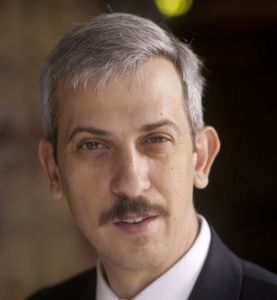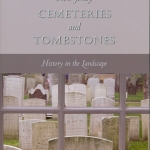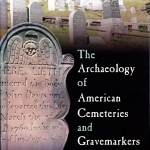Richard Veit, Monmouth University – Joseph Bonaparte’s Point Breeze Estate
Joseph Bonaparte is probably most notably known as Napoleon’s older brother, but his cultural significance goes much further than his famous family.
Richard Veit, an anthropologist at Monmouth University, offers an historical profile of Point Breeze, the lavish garden he brought to life on his New Jersey estate.
Richard Veit is Professor of Anthropology and Chair of the History and Anthropology Department at Monmouth University. Dr. Veit received his BA from Drew University in 1990, his MA in Historical Archaeology from the College of William and Mary in 1991, and his PhD. in Anthropology from the University of Pennsylvania in 1997. In 2007 he was the recipient of Monmouth University’s Distinguished Teacher Award and in 2012 he received Monmouth University’s Donald Warnecke Award for outstanding university service. At Monmouth he teaches courses on archaeology, historical archaeology, New Jersey history, Native Americans, and historic preservation.
He has authored or co-authored numerous articles and reviews and five books including Digging New Jersey’s Past: Historical Archaeology in the Garden State (Rutgers Press 2002), New Jersey Cemeteries and Tombstones History in the Landscape (co-authored by Mark Nonestied, Rutgers Press 2008), and New Jersey: A History of the Garden State (co-authored with Maxine Lurie, Rutgers Press 2012). His first book, Digging New Jersey’s Past, received awards from the New Jersey Historic Preservation Office, New Jersey Academic Studies Alliance, and the New Jersey Center for the Book at Rutgers University. Two of his books, Digging New Jersey’s Past and New Jersey: A History of the Garden State are listed on the New Jersey State library’s 101 Great New Jersey books list. He serves on the New Jersey Historical Commission and on the boards of the Society for Historical Archaeology, Council for Northeast Historical Archaeology, Crossroads of the American Revolution, and the Archaeological Society of New Jersey. He is President Elect of the Middle Atlantic Archaeological Conference. His research interests focus on the archaeology of early American life and as revealed by artifacts, architecture, and landscapes.
![]()
Joseph Bonaparte’s Point Breeze Estate
The Count is Very Particular About his Gardens: An Archaeological Examination of Joseph Bonaparte’s Point Breeze Estate
![]()
As a historical archaeologist, I spend much of my time studying people who lived centuries ago through the things they left behind. One of the most interesting individuals I have had the pleasure of studying is Joseph Bonaparte. The older brother of Napoleon, Joseph was the former King of both Naples and Spain.
In 1815, Joseph, a refugee of the Napoleonic wars, arrived in America. He would remain in the United States until 1839.
When asked what Joseph would do in America, Napoleon reportedly said, “He will be a bourgeoisie American and spend his time making gardens.”
The prediction came true.
For most of his self-imposed American exile, Joseph lived on a palatial estate he created in Bordentown, New Jersey called Point Breeze. Today Point Breeze is owned by Divine Word Missionaries.
In 2007, my team & I began an archaeological investigation of Point Breeze. We hoped to unearth the remains of his grand houses and document the remains of the extensive gardens he had constructed there.
So what can archaeology tell us about Point Breeze that historians don’t already know? Artifacts abound, but perhaps even more important are the aboveground traces of the estate: paths, tunnels, bridges, and ruins, which allow us to imagine the historic appearance of Point Breeze.
Joseph Bonaparte created one of America’s first picturesque landscapes, and foreshadowed the great public parks of 19th century America, such as Central Park.
The archaeological remnants of Point Breeze provide a tangible reminder of how Joseph Bonaparte, recreated a bit of the splendor he had known in Europe, and perhaps more importantly how his patronage for art, landscape architecture, and science enriched the cultural life of our young nation and inspired his contemporaries to create beautiful landscapes for public and private enjoyment.





